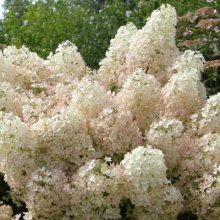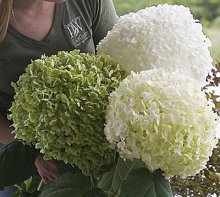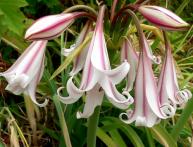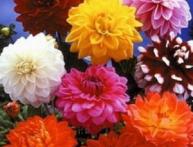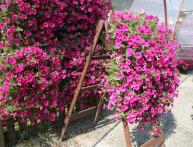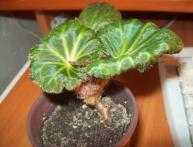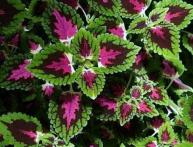Hydrangea Bobo - care tips
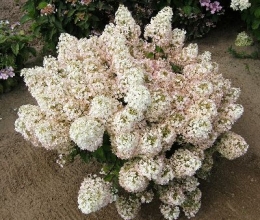
There are many varieties of hydrangea available today, but panicle hydrangea is the most popular type. This distribution is not accidental - the plant has many advantages, including fast growth, unpretentiousness and unusual appearance.
Paniculata hydrangea includes several varieties, among which the recently appeared Bobo has gained particular popularity.
Content:
general characteristics
This variety is a dwarf variety and typically reaches a height of about 70 centimeters and approximately 50 centimeters in diameter. The leaves are dark green in color, but the flowers themselves are usually white, but the shade can vary from soft pink to light lemon. The most abundant flowering of this plant occurs from July to September.
An interesting fact about bobo hydrangea is that the color of the flowers can be slightly changed if desired. To do this, when transplanting bushes, you need to add iron or aluminum sulfate to the soil mixture in a ratio of 20 grams per 1 kilogram of soil.
If we talk about the most optimal conditions To grow bobo hydrangea, the plant prefers semi-shaded or sunny areas that are well protected from wind currents. For planting, it is best to use moist, slightly acidic soil. This variety of hydrangeas needs to be watered once a week; in addition, the plant does not tolerate soil compaction, so the latter should be loosened several times in one season.
The use of bobo hydrangeas is varied - it is well suited for decorating terraces, borders, flower beds, as well as for landscaping personal plots and small gardens. In addition, such flowers are often grown in small containers on terraces or even balconies.
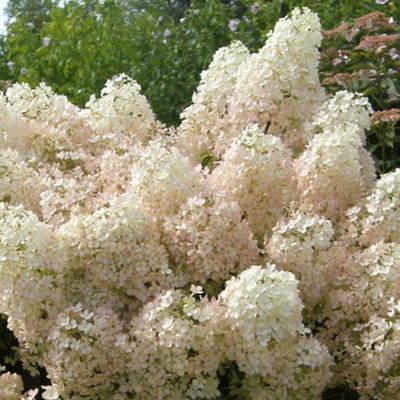
So, with proper care, flowers will grow beautiful and healthy and delight the people around them with their appearance.
Care. General provisions
Growing paniculata hydrangeas is not particularly difficult, but you still need to adhere to certain rules.
In order for the flower to grow, it needs to be watered regularly. In summer it is best to use rainwater, and in winter melt water. In this case, you must ensure that there is no lime in the water. The presence of lime can destroy hydrangeas.
Planting hydrangea
Paniculata hydrangea is planted in autumn and spring. As a rule, flowers are located at a distance of one meter from each other, since although the root system of hydrangea is not very deep, it is very branched. Water the flowers rainwater is best, and after watering the bud needs to be loosened a little.
At the end of May or at the beginning of June, you should fertilize the plants with a special solution of slurry with the addition of mineral fertilizer. It is best to use the following ingredients in this case:
- superphosphate
- potassium nitrate
- ammonium nitrate
This fertilizing helps improve flowering and lay flower buds for next year. Hilling up hydrangea bushes is carried out in the autumn. When planting hydrangeas, you should strictly follow all the rules in order to get beautiful and healthy flowers.
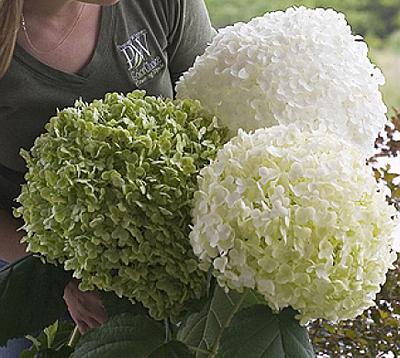
Plant pruning occurs between February and April.Usually a few stronger stems are left, and the rest are carefully cut out. At the same time, the number of stems that do not need to be cut depends entirely on the strength of the bush itself. These stems are not pruned, since flowering shoots emerge exclusively from the apical buds.
Of the younger shoots that form near the root collar, several stronger ones are also left. They are intended to replace already faded hydrangea stems. It is customary to cut the remaining shoots into cuttings for their further propagation.
Paniculate bobo hydrangea is known to form shoots on the current year's growth. Therefore, if you do not prune, the bushes will not only look neglected and unkempt, but the quality of their flowering will begin to decline significantly over time.
If in the spring carefully trim the bushes, but soon they will have shoots, on which new inflorescences may appear by the end of summer. The main rule when pruning is to do it in early spring, so that enough time is left for the development of new shoots. In addition, it is very important to feed the plant to provide stimulation for new healthy growth.
In the first year, you should not prune hydrangeas too much; during planting, only severely damaged and weakened shoots are carefully removed.
There is a way to slightly rejuvenate aging bushes. This is done by pruning “to the stump” or to perennial wood. Such shoots may begin to bloom the next year.
Watch the video about Bobo hydrangea:
Interesting information about the vegetable garden

